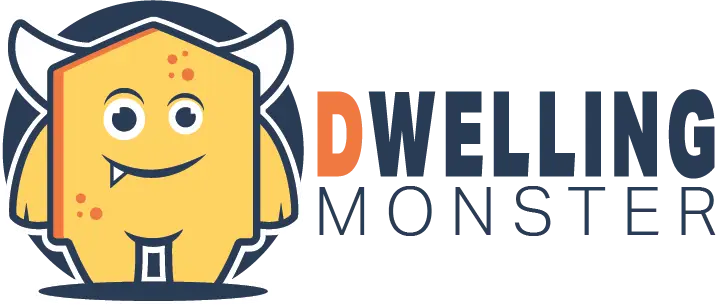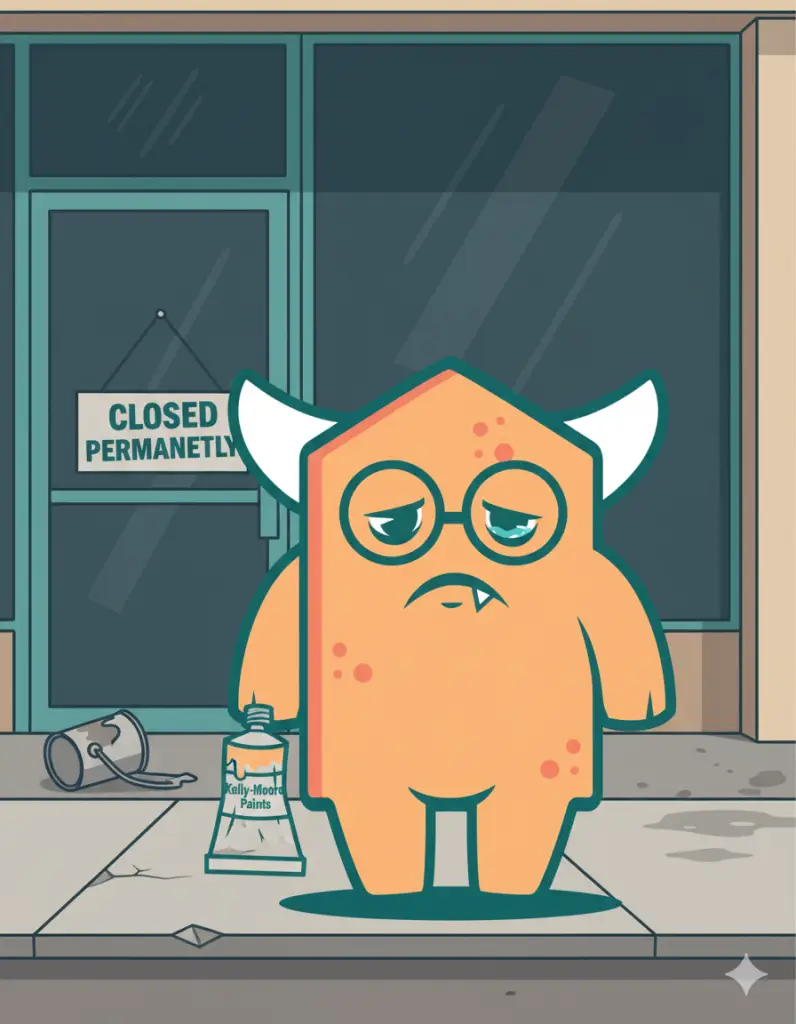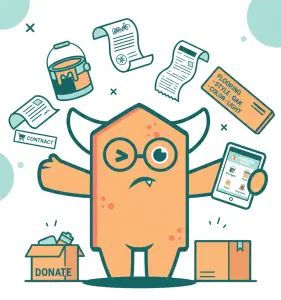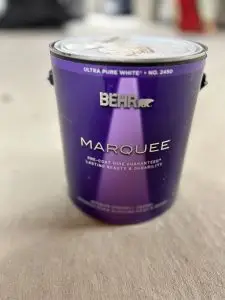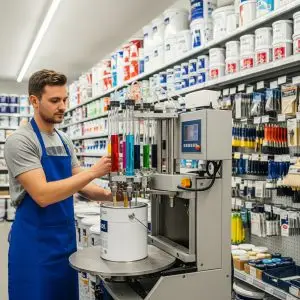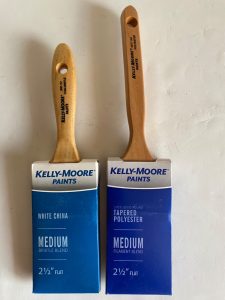I’ll be honest – Kelly-Moore isn’t a brand most people outside of certain regions know well, and there’s some sad news here. On January 12, 2024, Kelly-Moore abruptly shut down after owing hundreds of millions in legal expenses and unpaid taxes. But here’s the thing: there are still millions of gallons of Kelly-Moore paint on walls across America, and people need to understand how to match it.
If you’re one of those folks with Kelly-Moore paint in your home (and trust me, you’re not alone), this guide will help you decode those labels so you can successfully convert to other brands or work with paint stores to get accurate matches. Kelly-Moore actually had one of the most detailed and user-friendly labeling systems in the industry.
Understanding Your Kelly-Moore Label Layout
Kelly-Moore labels were laid out with a level of detail that I actually miss seeing in other brands. They didn’t assume you knew what you were looking at – they gave you all the information you needed right there on the label.
In the top right corner, you’d find the complete store information: store code, full address, and phone number. This wasn’t just for marketing – Kelly-Moore knew that different stores sometimes had slight calibration differences in their tinting equipment, so they wanted you to be able to return to the exact location where your paint was mixed.
On the left side, Kelly-Moore displayed the date the paint was made, which is crucial for anyone trying to match colors months or years later. Paint formulas do change over time, and knowing exactly when your paint was originally mixed helps tremendously.
Below the date, you’d see two critical lines of information in specific formats that told you everything about your paint’s foundation.
Decoding Kelly-Moore’s Identification System
First Line Format: XXX — XXX — XQ
The first set of three digits indicated the finish type. For example:
- 550 = Flat finish
- 580 = Satin finish
- 590 = Semi-gloss finish
The second set told you the base type – and this is absolutely critical:
- 222 = Medium tint base
- 111 = Light tint base
- 444 = Deep tint base
The final part showed volume:
- 1Q = 1 quart
- 1G = 1 gallon
Second Line Format: XX — XXXX — XXXX
- First set: Last two digits of the year (helpful for tracking formula changes)
- Second set: Custom color code (if you had a custom mix)
- Third set: Store code (matching the store info in the top right)
Understanding Kelly-Moore’s Tint Base System
This is where Kelly-Moore really showed their expertise. The tint base number wasn’t just a random code – it told you exactly what kind of foundation your colorants were going into. Understanding this is crucial because the same colorants behave completely differently in different bases.
For example, if you had base 222 (medium tint base), it means your paint started with a specific amount of white pigment that was formulated to work optimally with medium-intensity colors. If you try to recreate that exact color using a different base, you won’t get the same result, even if you use identical colorant amounts.
| Base Code | Base Type | Best For |
|---|---|---|
| 111 | Light Tint Base | Pastels and light colors |
| 222 | Medium Tint Base | Mid-tone colors |
| 444 | Deep Tint Base | Dark and saturated colors |
Decoding Kelly-Moore’s 48-Drop Formula System
Here’s where Kelly-Moore’s precision really shined. Their colorant formulas followed a format that was both simple and incredibly accurate:

Let me break this down:
- B: Colorant type (in this case, Black with blue undertones)
- 0Y: Number of full ounces (zero ounces in this example)
- 12.5000: Number of drops
Kelly-Moore used a 48-drop-per-ounce system, which means:
- 48 drops = 1 fluid ounce
- 1 drop = 0.616 ml
- Smallest increment: 1/8 drop (0.1250) = 0.077 ml
Common Kelly-Moore Colorant Codes:
| Code | Color Description |
|---|---|
| B | Black (with blue undertones) |
| C | Gold Yellow |
| DU | Green (with blue undertones) |
| L | Brown |
| R | Red |
| Y | Pure Yellow |
The beauty of this system was its straightforward nature. If you needed to double a recipe, you simply doubled all the drop counts. If you needed half the amount, you divided everything by two.
Kelly-Moore’s Custom Color System
In the middle of Kelly-Moore labels, above the barcode, you’d see the paint name. For custom mixes, this could be unpredictable because customers could choose their own names, and sometimes paint store employees got creative with naming.
This created a challenge: you couldn’t always tell if a color name was an official Kelly-Moore color or something someone made up on the spot. Words like “Sunshine Yellow” could be either a manufacturer name or someone’s description of their kitchen color. Always rely on the formula numbers, not the color names, when trying to match Kelly-Moore paints.
Converting Kelly-Moore Formulas to Other Brands
Since Kelly-Moore is no longer available, conversion to other brands is essential. Here’s how their 48-drop system translates:
Converting TO other brands:
To Behr: Multiply drops by 8 (48-drop to 384-drop system)
- Example: 12.5000 drops × 8 = 100 drops in Behr’s system
To Sherwin-Williams: Multiply drops by 0.667 (48-drop to 32-drop system)
- Example: 12.5000 drops × 0.667 = approximately 8.33 drops in SW system
Base Conversion Considerations:
Kelly-Moore’s base chemistry was unique, so you can’t just convert the colorant numbers. You need to:
- Match the base type as closely as possible
- Convert the colorant amounts using the ratios above
- Expect some variation due to different base formulations
- Always test a small sample first
| Kelly-Moore Base | Sherwin-Williams Equivalent | Behr Equivalent |
|---|---|---|
| 111 (Light) | Extra White | Base 1 or 2 |
| 222 (Medium) | Accent Base | Base 3 or 4 |
| 444 (Deep) | Deep Base | Base 5 or 6 |
Pro Tips for Working with Kelly-Moore Legacy Paint
Documentation is Everything: If you have Kelly-Moore paint, photograph those labels now. The information on them is your roadmap to future matching success.
Bring Physical Samples: When converting Kelly-Moore colors, bring an actual painted sample to the paint store, not just the formula. The paint store’s color-matching equipment can sometimes get you closer than mathematical conversion alone.
Consider the Age Factor: Kelly-Moore paint that’s been on walls for years has likely faded or changed color due to UV exposure. Factor this into your matching expectations.
Test Before Committing: Always buy a quart first and test it in your actual lighting conditions before committing to gallons. Cross-brand conversions are educated guesses, not perfect sciences.
Understand Regional Variations: Kelly-Moore operated in specific regions and sometimes used different colorant systems based on local environmental regulations. The colorant system should be indicated on your label’s right side.
Making the Most of Your Kelly-Moore Information
Even though Kelly-Moore is no longer operating, their systematic approach to paint formulation created labels that contain all the information you need for successful color matching. The key is understanding that their 48-drop system and detailed base coding gives you a precise recipe that can be mathematically converted to other brands.
When you walk into a paint store with a Kelly-Moore label, you’re bringing them a detailed formula rather than just a color name. That mathematical precision is what makes successful conversion possible, even if it’s not always perfect.
Remember: Kelly-Moore’s attention to detail in their labeling system was actually ahead of its time. While the company may be gone, the information they provided on their labels remains some of the most useful data you can have for paint matching projects.
